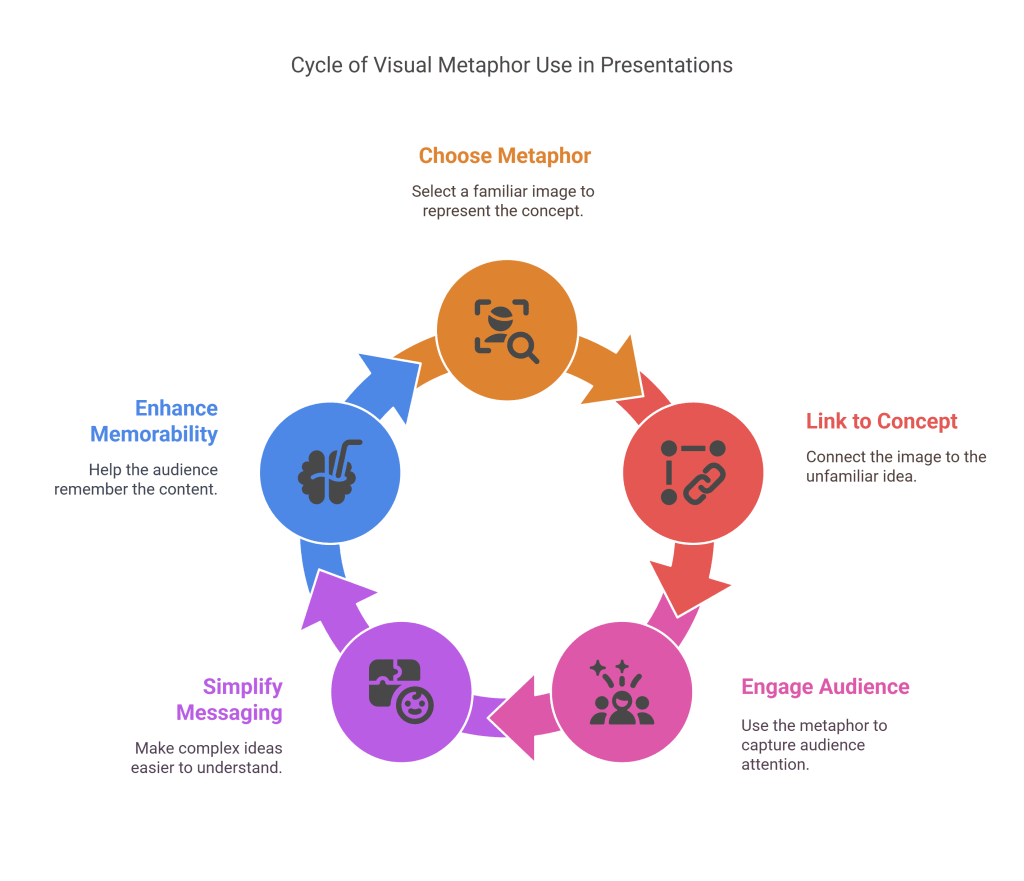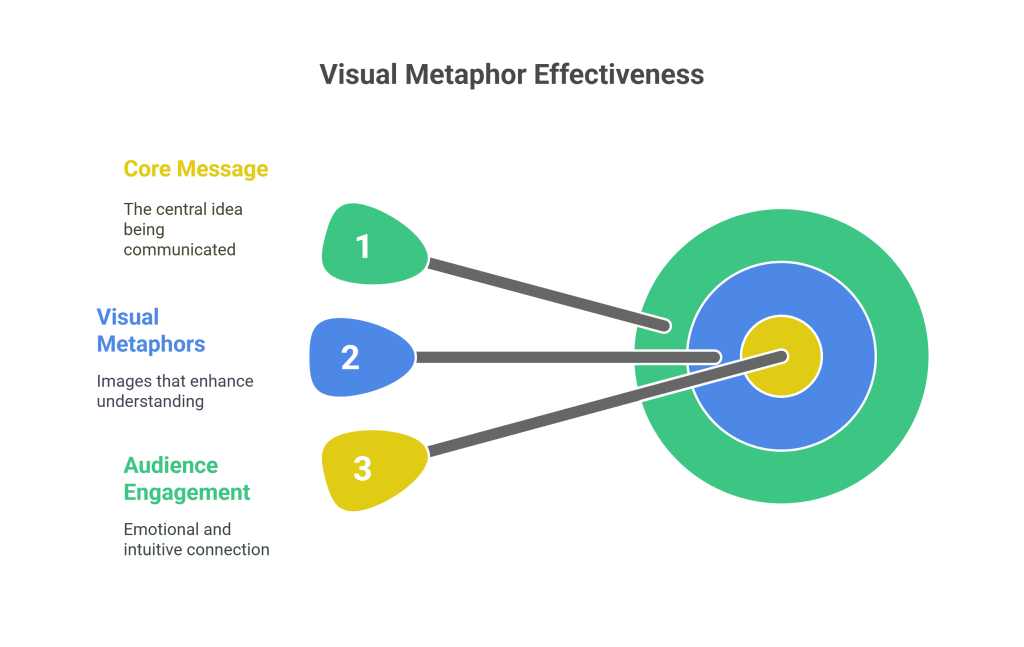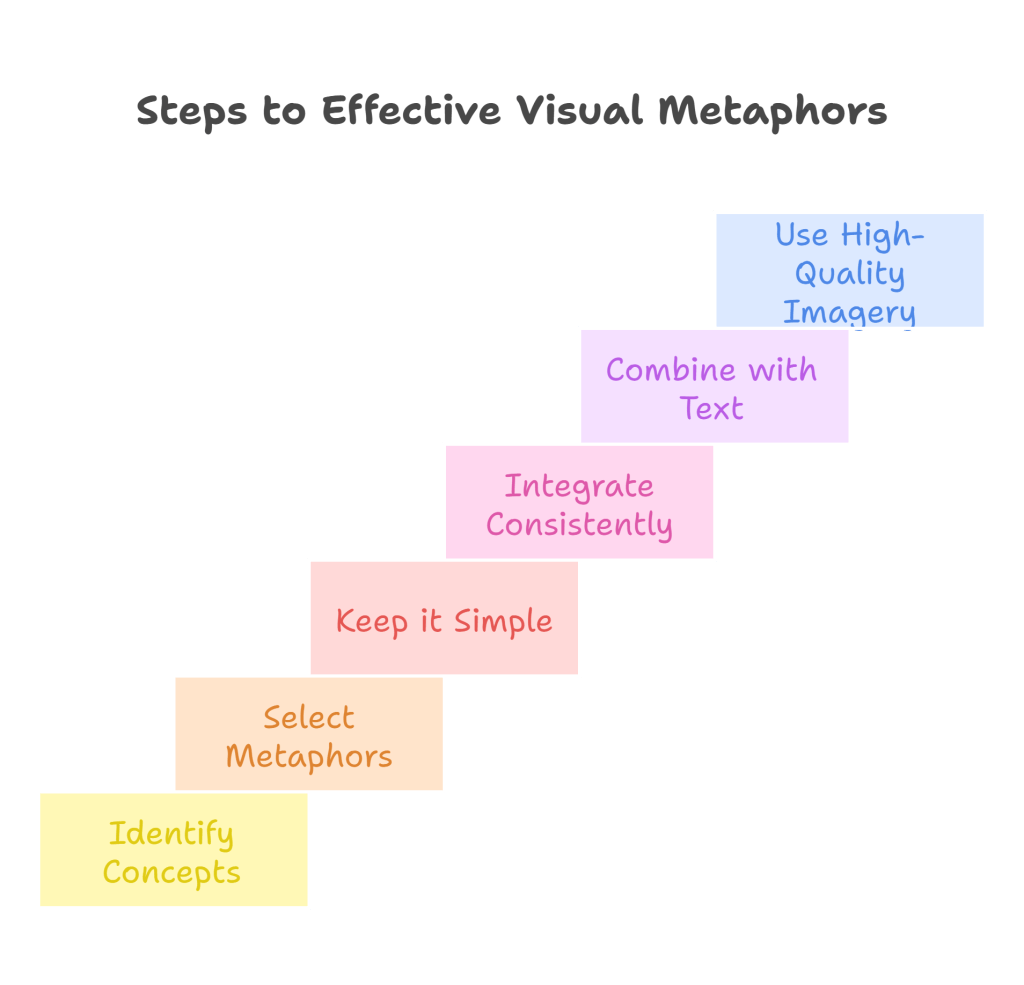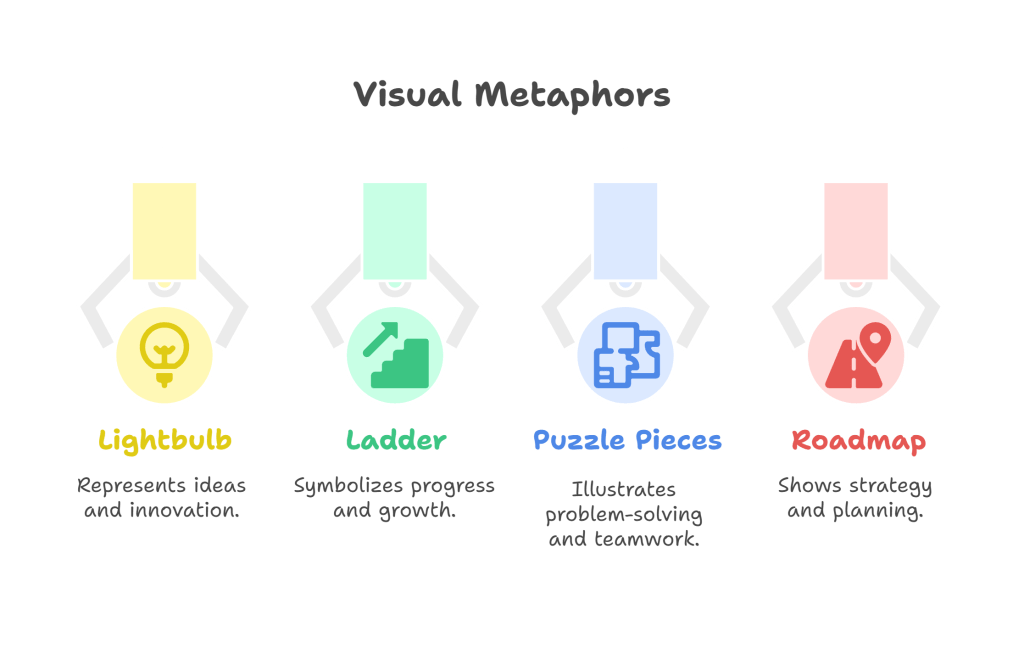How to Use Visual Metaphors
in Presentation Design
How to Use Visual Metaphors in Presentation Design
Visual metaphors are powerful tools that help communicate complex ideas quickly and memorably by linking unfamiliar concepts to familiar images. When used effectively in presentations, they engage audiences, simplify messaging, and make your content stand out.

Why Visual Metaphors Work
Our brains are wired to understand stories and images faster than abstract concepts. Visual metaphors tap into this natural tendency, allowing your audience to grasp your message intuitively and emotionally.

Tips for Using Visual Metaphors in Your Presentations
Identify Key Concepts
Choose the main ideas you want to simplify or highlight.Select Relevant Metaphors
Use images or symbols that your audience will easily recognize and relate to.Keep it Simple and Clear
Avoid overly complex or obscure metaphors that might confuse viewers.Integrate Metaphors Consistently
Reinforce your story by using visual metaphors throughout the presentation.Combine with Text for Clarity
Support metaphors with brief explanatory text to ensure understanding.Use High-Quality, Relevant Imagery
Strong visuals increase impact and professionalism.

Examples of Visual Metaphors in Presentations
A lightbulb to represent ideas or innovation.
A ladder to symbolize progress or growth.
Puzzle pieces to illustrate problem-solving or teamwork.
A roadmap to show strategy or planning.

Final Thoughts
Visual metaphors elevate your presentation by transforming abstract messages into relatable stories. By thoughtfully incorporating them, you create a richer, more engaging experience for your audience. A1 Slides specializes in crafting presentations that use visual metaphors to connect and inspire.





